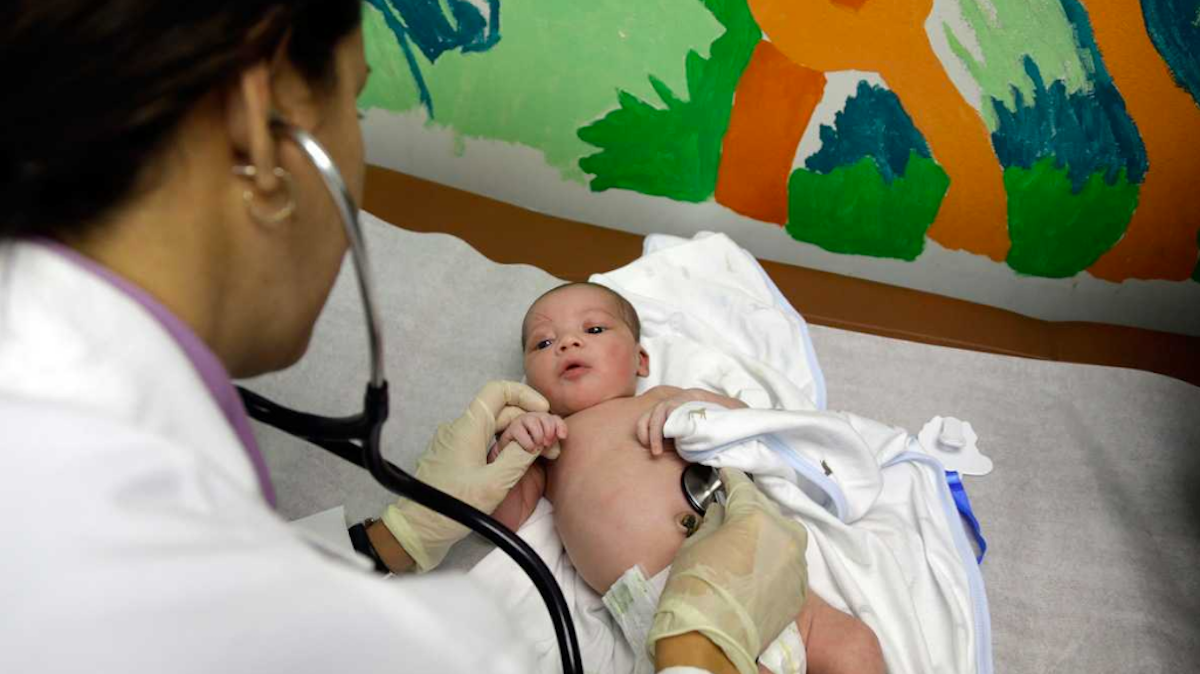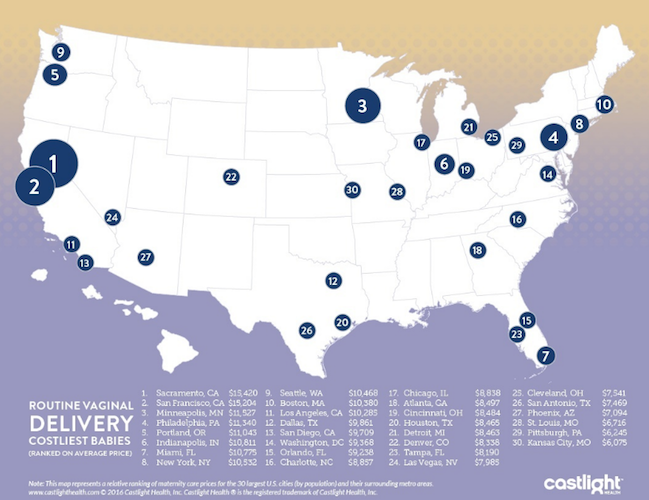Philly-area moms can expect to pay more than most for maternity care
Listen
(AP Photo/Lynne Sladky
It’s not easy to give birth. And, in the Philadelphia region, it’s not cheap either.
A new study from the company Castlight Health finds that the Philadelphia area is the fourth most expensive in the country for maternity care, with an average price of $11,340 for a routine vaginal birth. That’s well above the national average of $8,700, though short of Sacramento, California, where a delivery tops $15,000.
It’s already been well-documented that in the American health care system, the cost for procedures can vary widely — not only from city to city, but even within cities. And there is little evidence that quality correlates with price.
“There isn’t rhyme or reason between quality and cost, which study after study has highlighted in health care,” said Kristin Torres Mowat, senior vice president of plan development and data operations at Castlight, which ranked the 30 largest U.S. metropolitan areas.

Image courtesy of Castlight Health
So if it’s not quality, what’s driving the higher prices? It’s likely a couple of things.
“There is a relatively less competitive marketplace,” said Dr. Scott Lorch, a professor of pediatrics at the University of Pennsylvania and a physician at CHOP. “I think that the Philadelphia obstetric market over the last 15 years has shrunk considerably.“
There used to be 19 obstetric facilities in Philadelphia. Today, there are six. But it isn’t just simple supply and demand, he said. Prices can be influenced by the prevailing wages in a region, by the number of big hospitals and insurance companies, and also by the socioeconomic mix of patients.
Castlight Health’s report doesn’t include theories for the price differences, and it doesn’t release its raw data, so it’s hard to know how many procedures went into the study. The rankings are also based on the costs paid by employers who are self-insured, plus the out-of-pocket costs passed along to their employees. Medicaid and other forms of insurance aren’t included.
Lorch said that, even with those caveats, it’s a good reminder that if you can shop around, you probably should.
“I think in the era where patients are taking a greater share of the costs of care, people have begun, when possible, to do more comparison shopping,” he said.
Of course, trying to get a health care price over the phone can feel a bit like labor, too.
WHYY is your source for fact-based, in-depth journalism and information. As a nonprofit organization, we rely on financial support from readers like you. Please give today.

